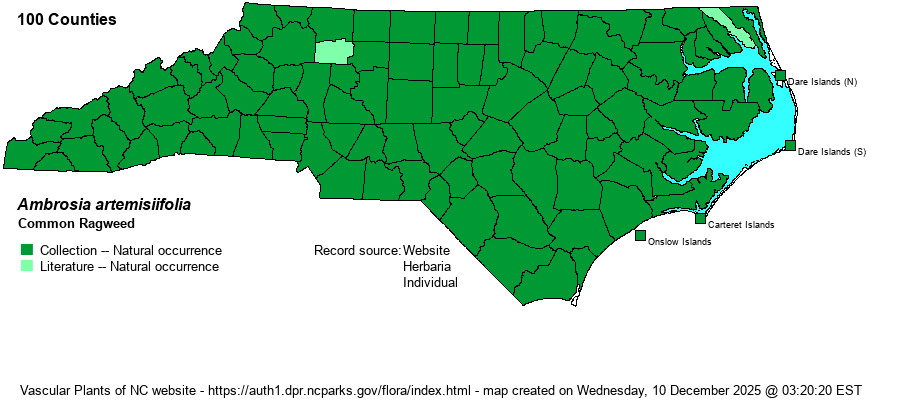| Author | L. | |
| Distribution | Throughout the state, including the Outer Banks and barrier islands. Present in all 100 counties.
Newf. to southern AK, south to FL and CA. | |
| Abundance | Common to often abundant across the state. | |
| Habitat | This is one of our "weediest" of all native species, being found in a great array of sunny habitats. Mostly found in disturbed soil of fields, pastures, roadsides, powerlines, clearings, vacant lots, yards, etc. Also occurs on rock outcrops and ledges. |
| Phenology | Flowering and fruiting August-October. | |
| Identification | Despite the name "ragweed" being familiar to everyone, especially to hay fever sufferers, it is surprising how few laymen actually recognize the plant in the field. On the other hand, it is no doubt familiar to all naturalists. Common Ragweed has broad, triangular-shaped leaves that are dissected into fern-like divisions. Stems typically grow 1-3 feet tall, sometimes much more. The inflorescence is terminal and branched, with female flowers clustered in the leaf axils and male flowers forming erect, linear rows on spikes up to 6 inches long. If you brush up against the plants in full "flower", you may well get the yellow pollen on your clothing, or see the pollen coloring the air yellow for a few moments. | |
| Taxonomic Comments | None
| |
| Other Common Name(s) | Annual Ragweed, Low Ragweed | |
| State Rank | S5 | |
| Global Rank | G5 | |
| State Status | | |
| US Status | | |
| USACE-agcp | FACU link |
| USACE-emp | FACU link |

